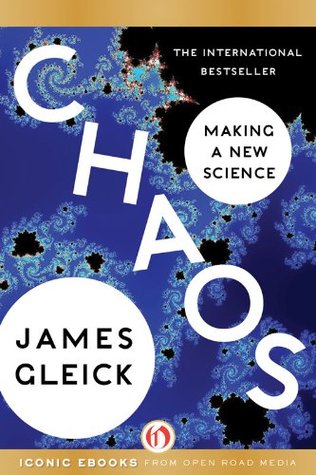More on this book
Community
Kindle Notes & Highlights
In the end, a doctor called it off. He prescribed a modest regimen of Valium and an enforced vacation. But by then Feigenbaum had created a universal theory.
Many new pieces were understood at first only by a few insiders. A mathematical discovery was understood by mathematicians, a physics discovery by physicists, a meteorological discovery by no one.
“In a way, art is a theory about the way the world looks to human beings. It’s abundantly obvious that one doesn’t know the world around us in detail. What artists have accomplished is realizing that there’s only a small amount of stuff that’s important, and then seeing what it was.
I truly do want to know how to describe clouds. But to say there’s a piece over here with that much density, and next to it a piece with this much density—to accumulate that much detailed information, I think is wrong. It’s certainly not how a human being perceives those things, and it’s not how an artist perceives them. Somewhere the business of writing down partial differential equations is not to have done the work on the problem.
Like all good general-purpose physics laboratories, Libchaber’s existed in a state of constant mess, paint cans and hand tools strewn about on floors and tables, odd-sized pieces of metal and plastic everywhere. Amid the disarray, the apparatus that held Libchaber’s minuscule fluid cell was a striking bit of purposefulness.
He was enough of a mathematician to know that cataloguing shapes proved nothing. But he was enough of a poet to trust that neither accident nor purpose could explain the striking universality of forms he had assembled in his long years of gazing at nature. Physical laws must explain it, governing force and growth in ways that were just out of understanding’s reach. Plato again.
Whenever a good physicist examines a simulation, he must wonder what bit of reality was left out, what potential surprise was sidestepped. Libchaber liked to say that he would not want to fly in a simulated airplane—he would wonder what had been missed.
the Mandelbrot set seems more fractal than fractals, so rich is its complication across scales. A cataloguing of the different images within it or a numerical description of the set’s outline would require an infinity of information. But here is a paradox: to send a full description of the set over a transmission line requires just a few dozen characters of code.
If the set were thought of as a planet-sized object, a personal computer could show the whole object, or features the size of cities, or the size of buildings, or the size of rooms, or the size of books, or the size of letters, or the size of bacteria, or the size of atoms. The people who looked at such pictures saw that all the scales had similar patterns, yet every scale was different. And all these microscopic landscapes were generated by the same few lines of computer code.*
“On a philosophical level, it struck me as an operational way to define free will, in a way that allowed you to reconcile free will with determinism. The system is deterministic, but you can’t say what it’s going to do next.
accuracy. Information proved as good a word as any, but people had to remember that they were using a specialized value-free term without the usual connotations of facts, learning, wisdom, understanding, enlightenment.
To Robert Shaw, strange attractors were engines of information. In his first and grandest conception, chaos offered a natural way of returning to the physical sciences, in reinvigorated form, the ideas that information theory had drawn from thermodynamics.
Mapmakers highlight such features as their clients choose. Whatever their purpose, maps and models must simplify as much as they mimic the world.
Simply put, a linear process, given a slight nudge, tends to remain slightly off track. A nonlinear process, given the same nudge, tends to return to its starting point.
The ordinary-sized stuff which is our lives, the things people write poetry about—clouds—daffodils—waterfalls—and what happens in a cup of coffee when the cream goes in—these things are full of mystery, as mysterious to us as the heavens were to the Greeks…. The future is disorder.
a kilopage textbook,


